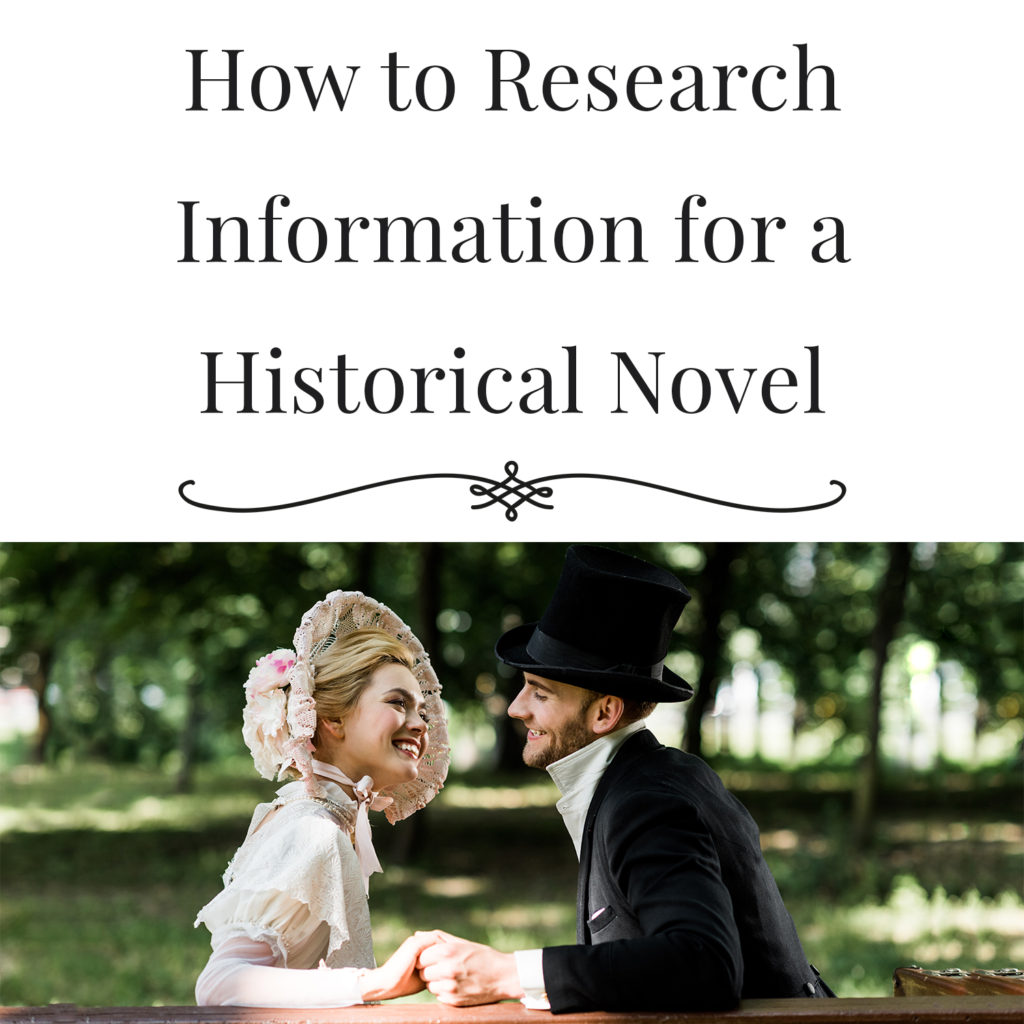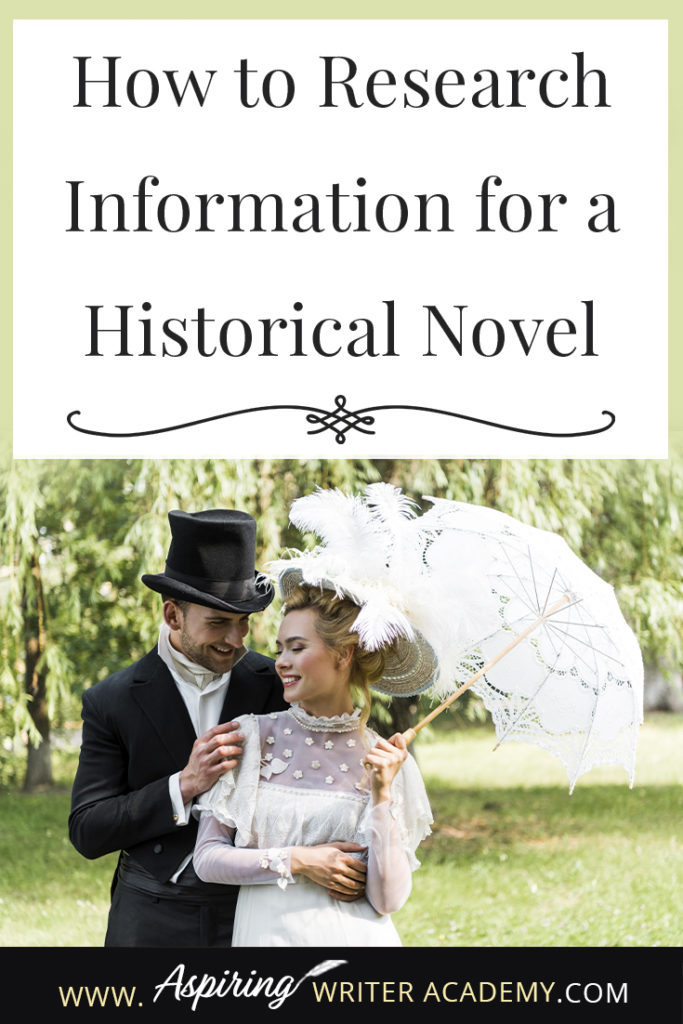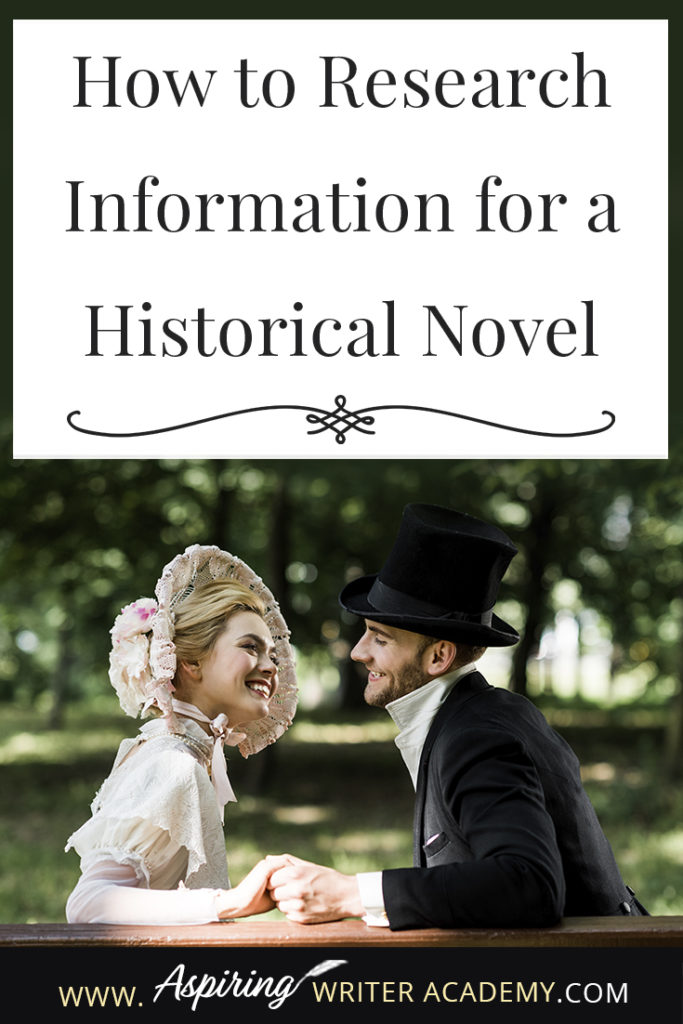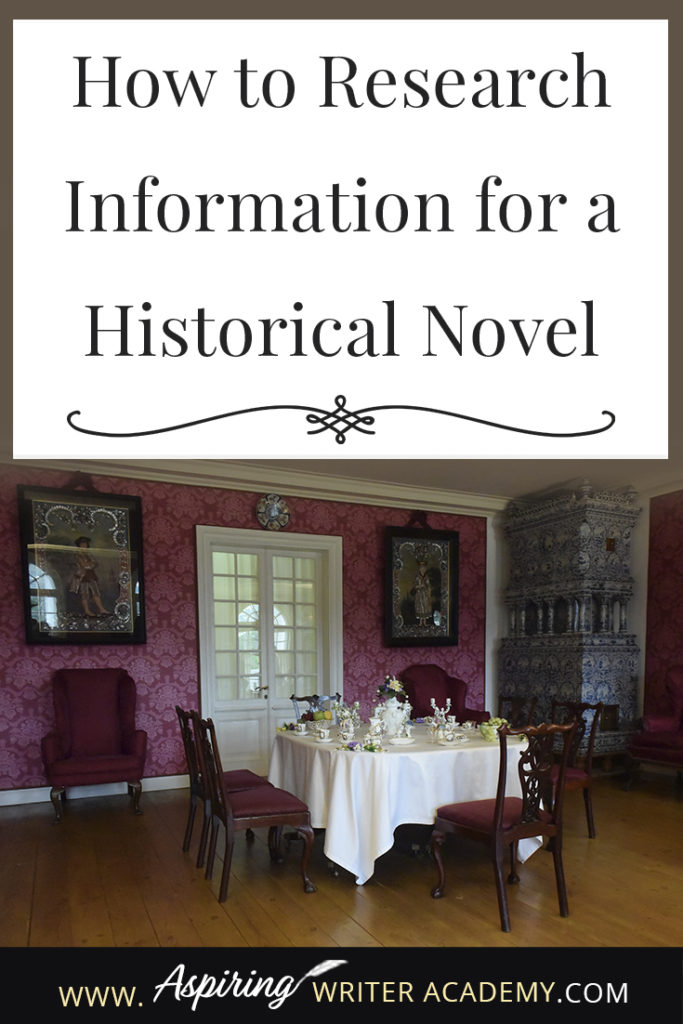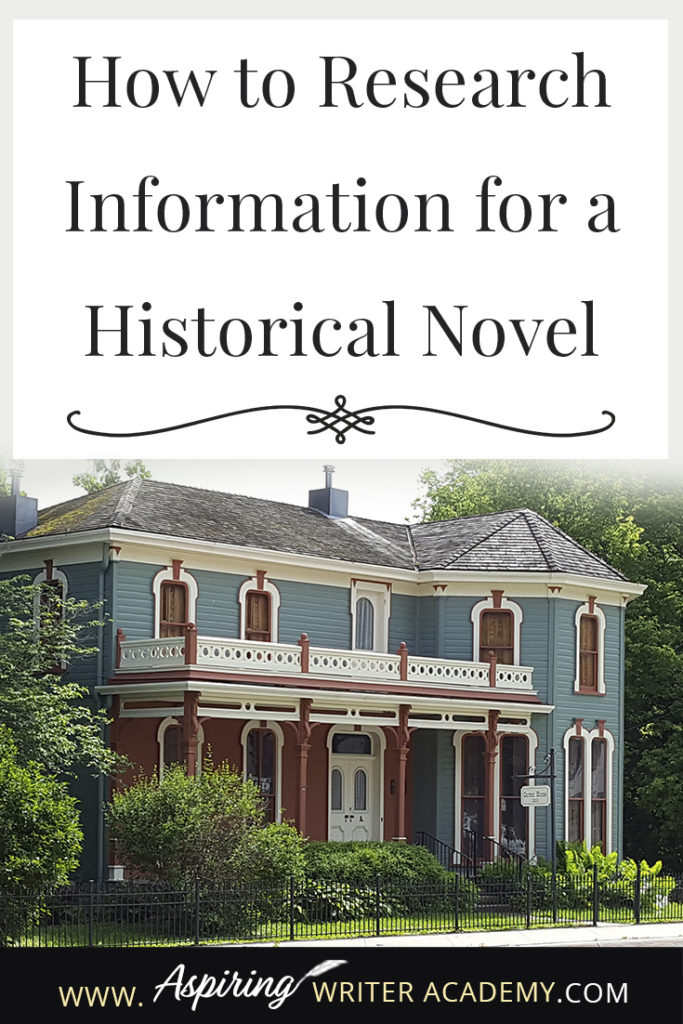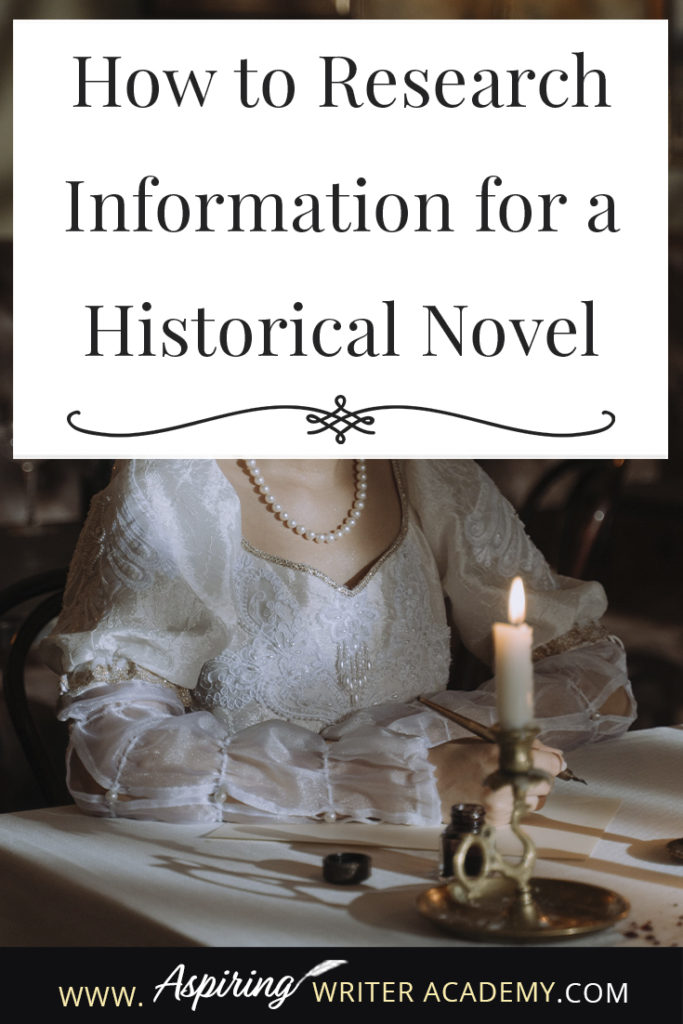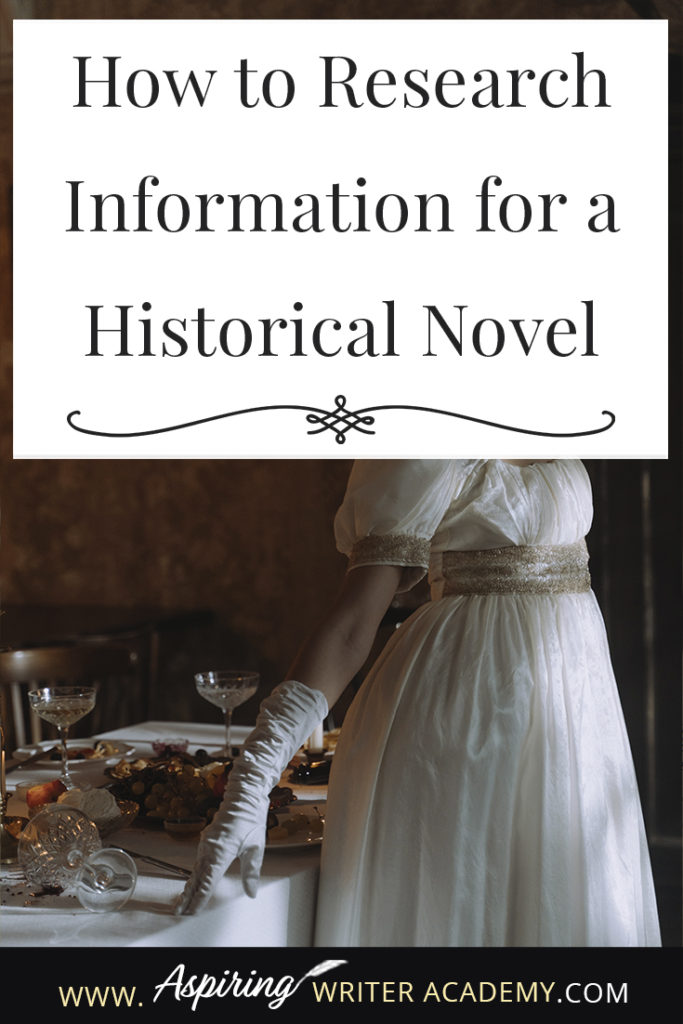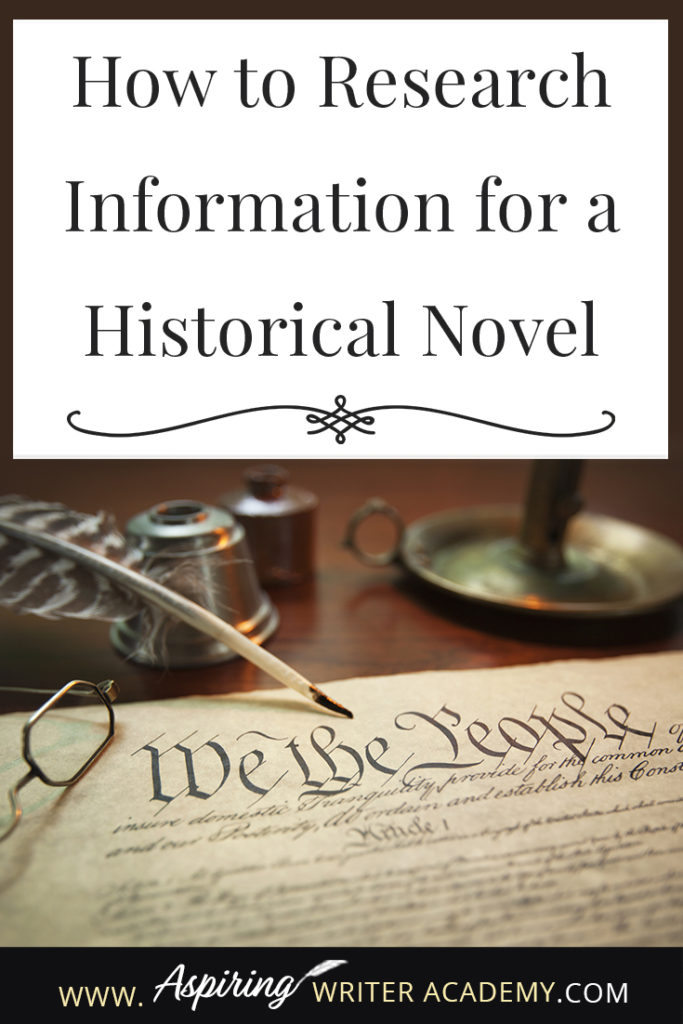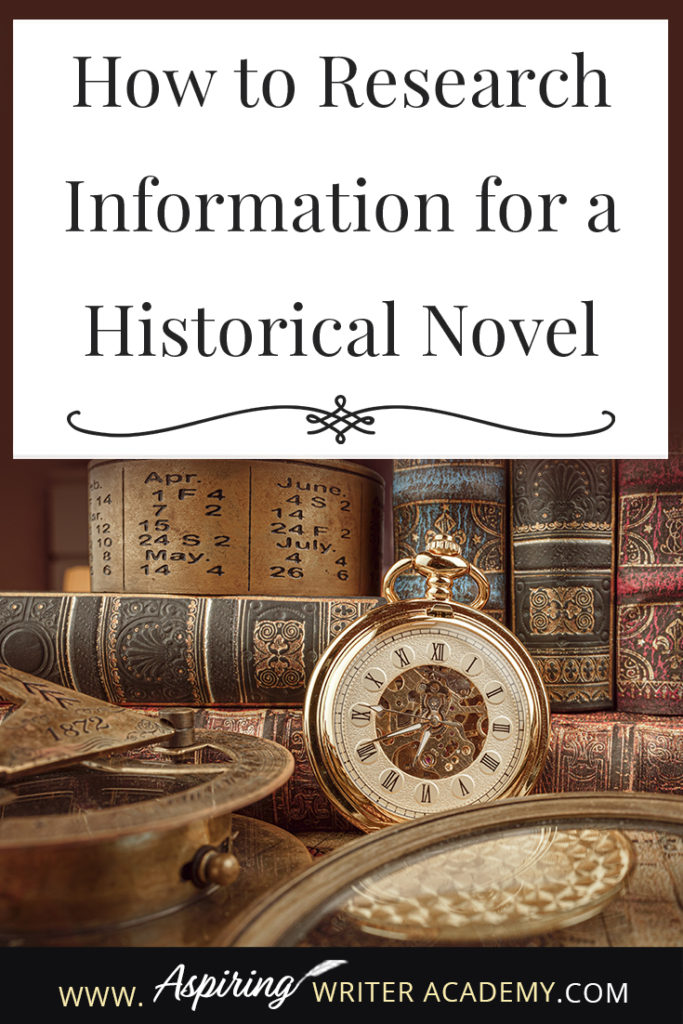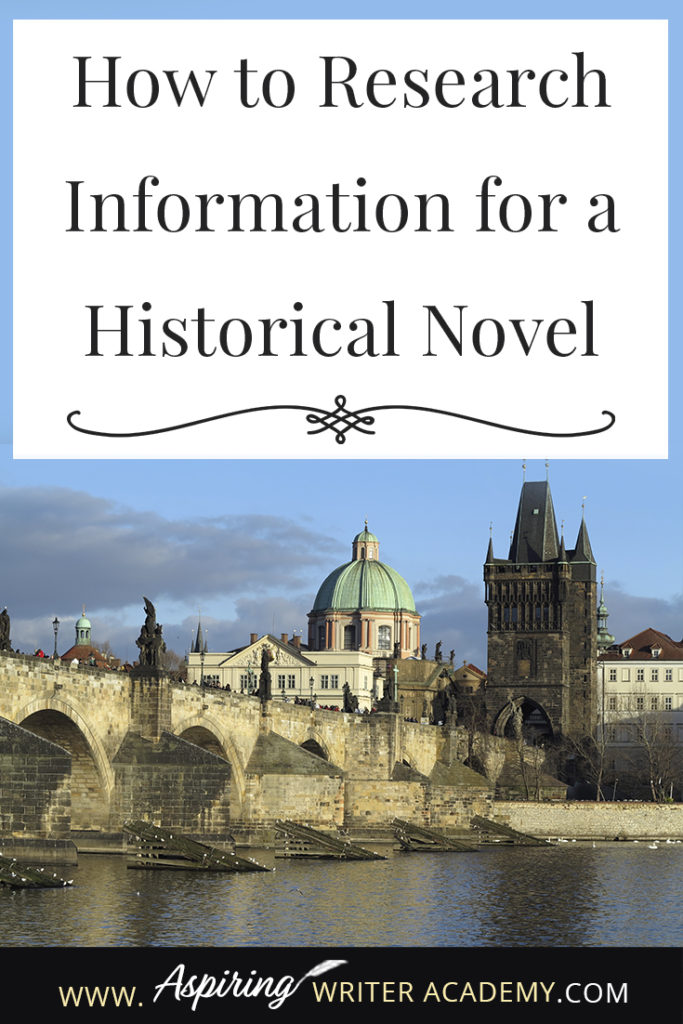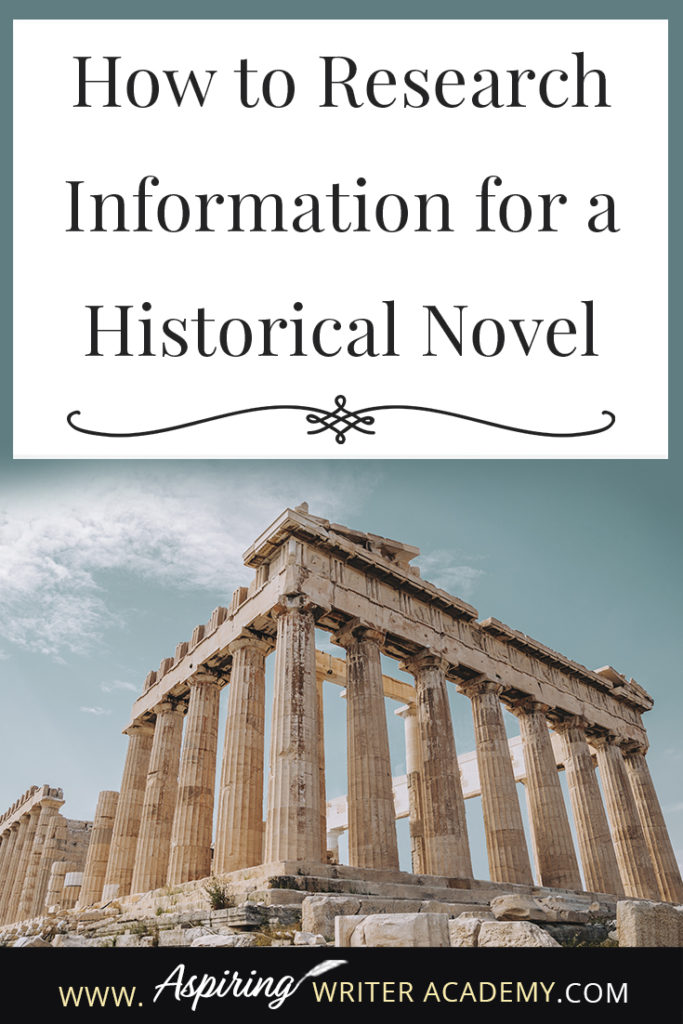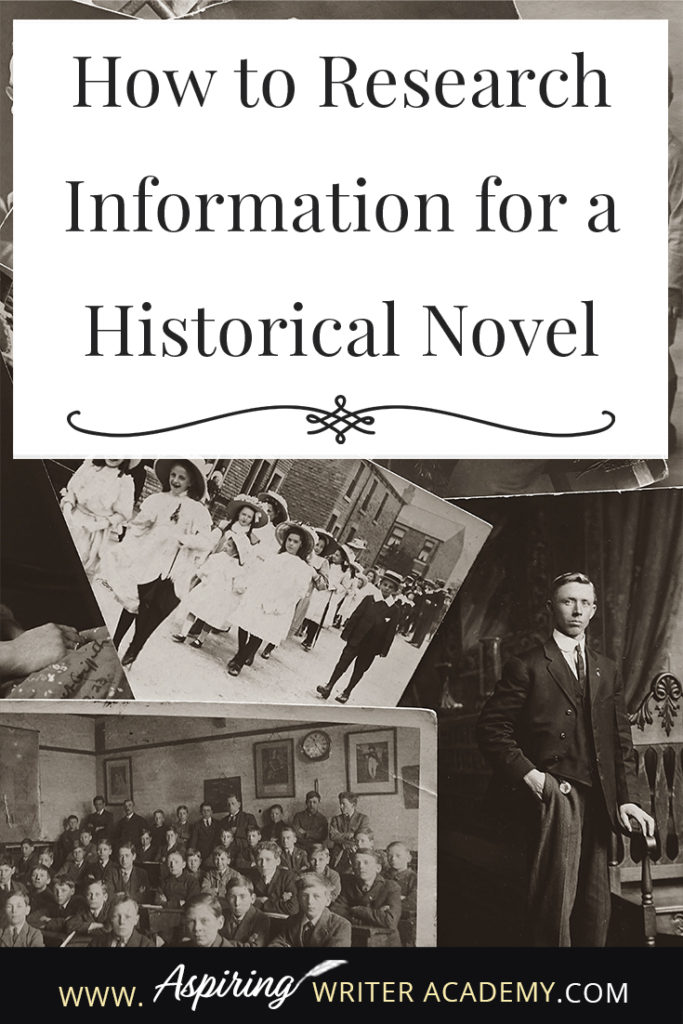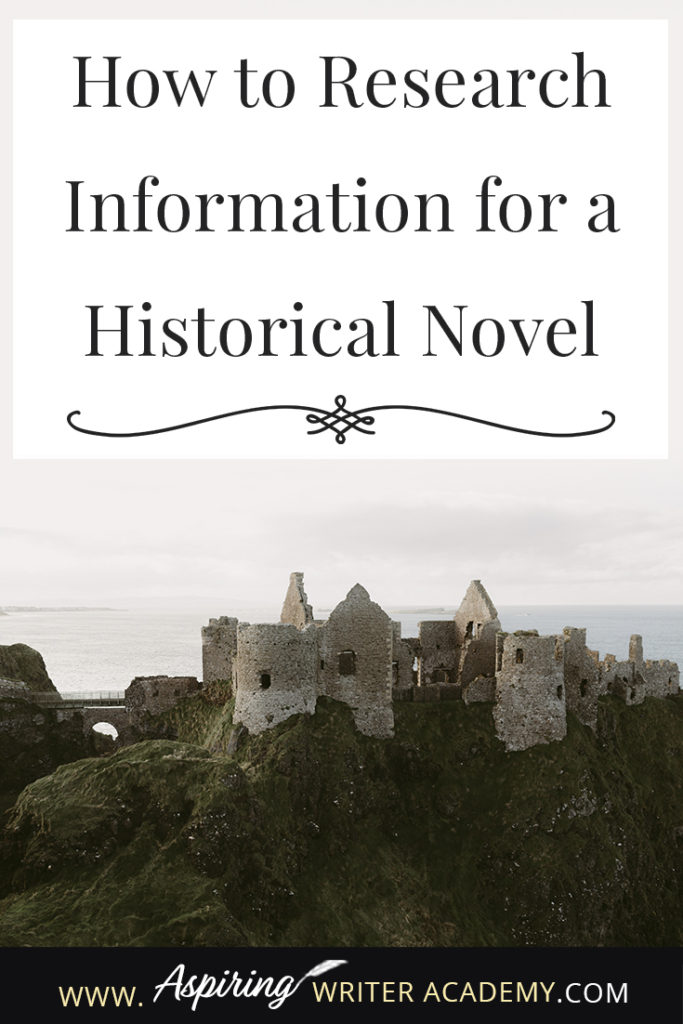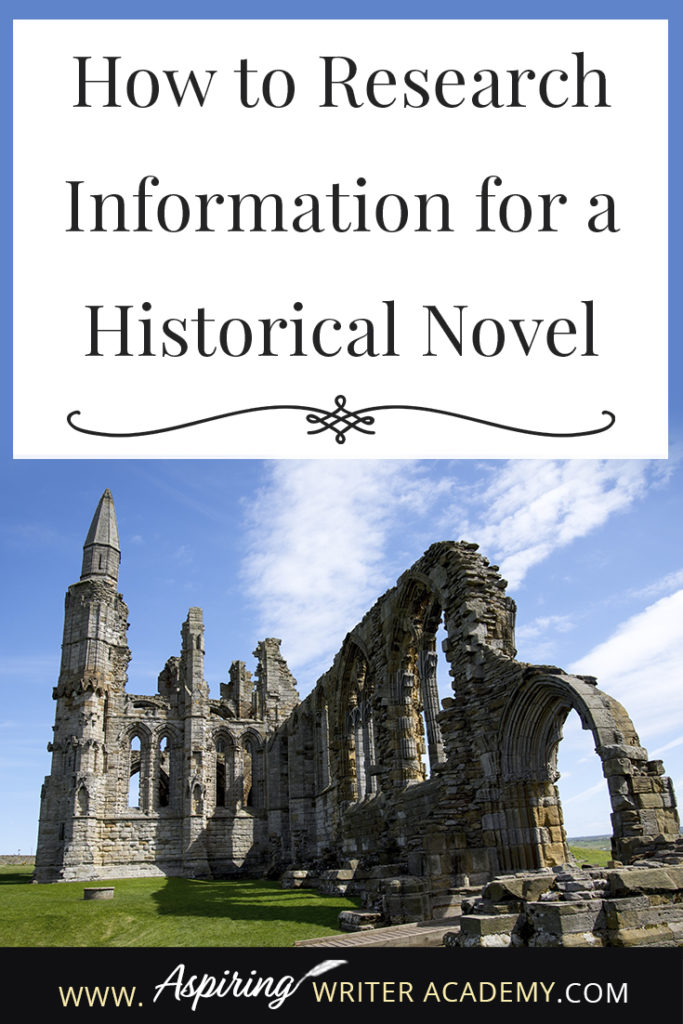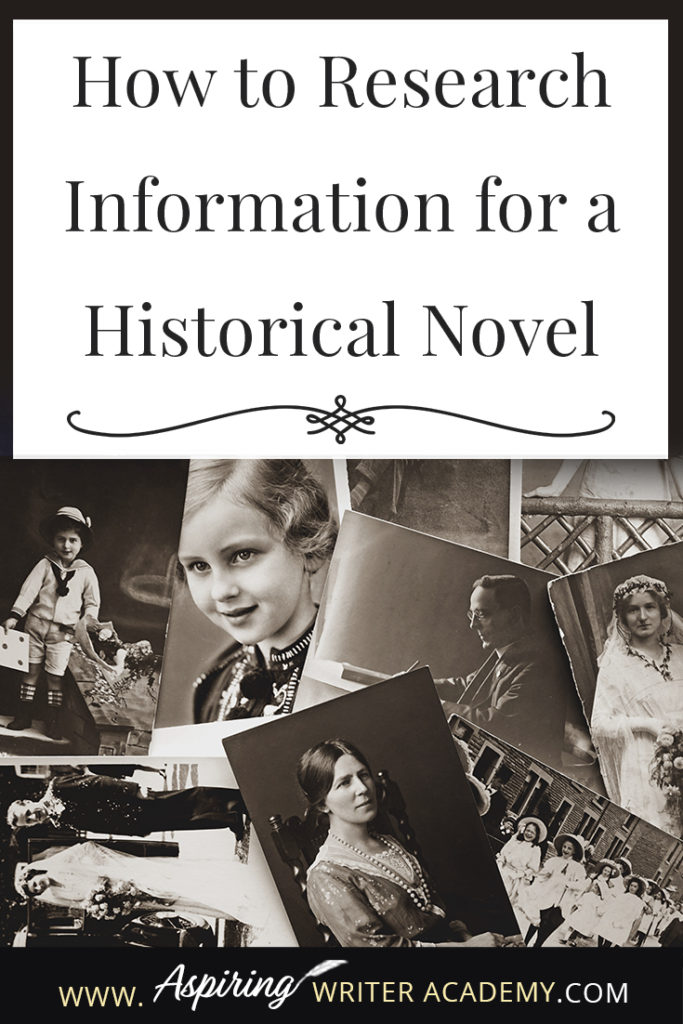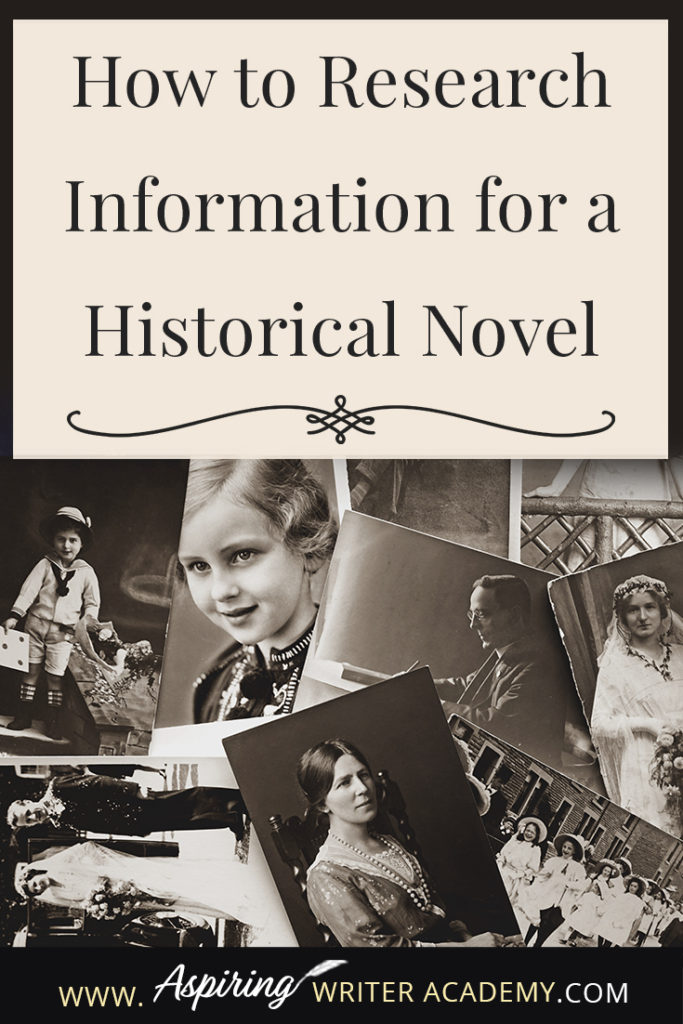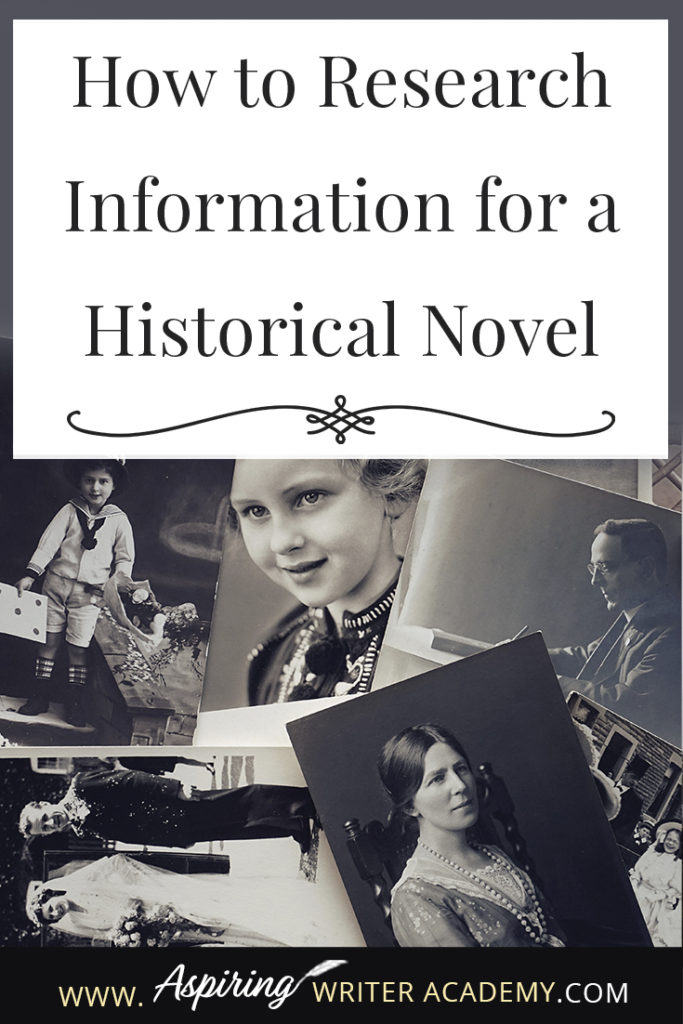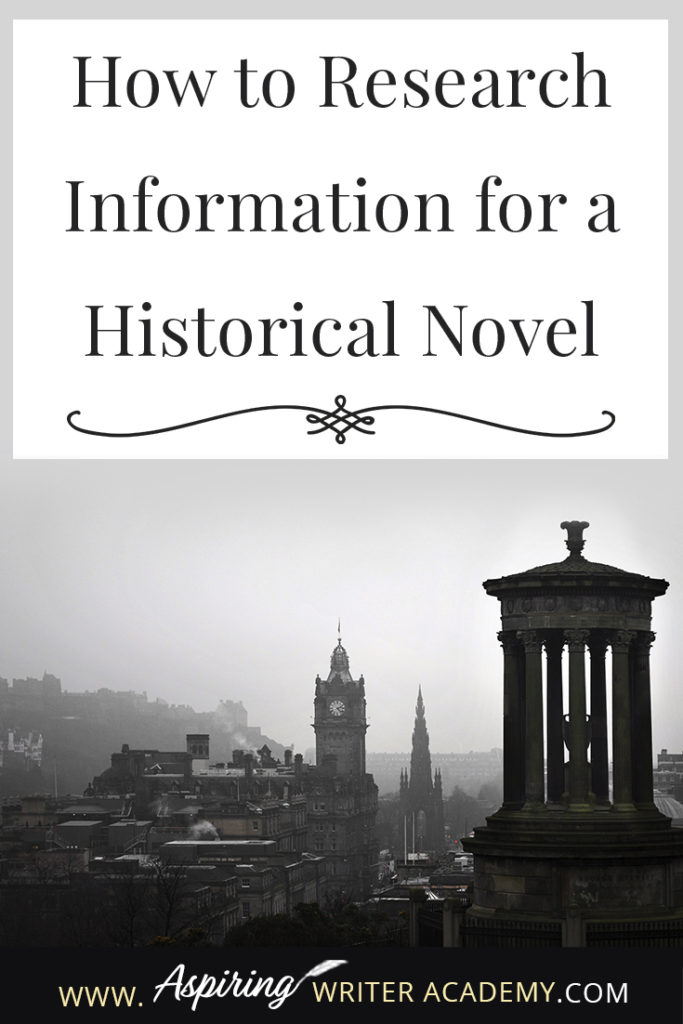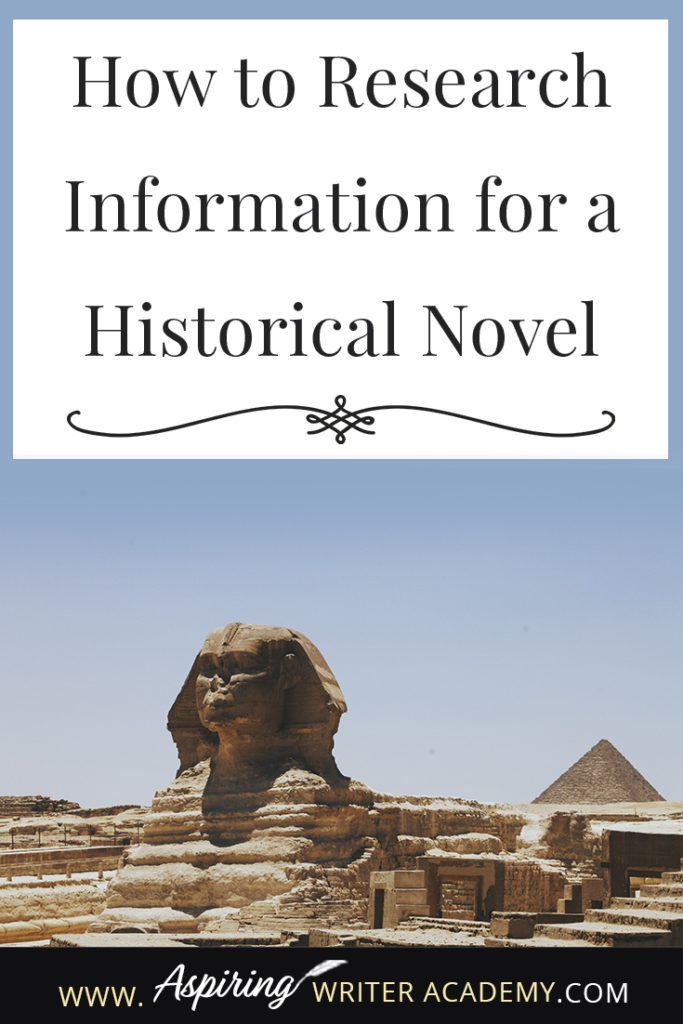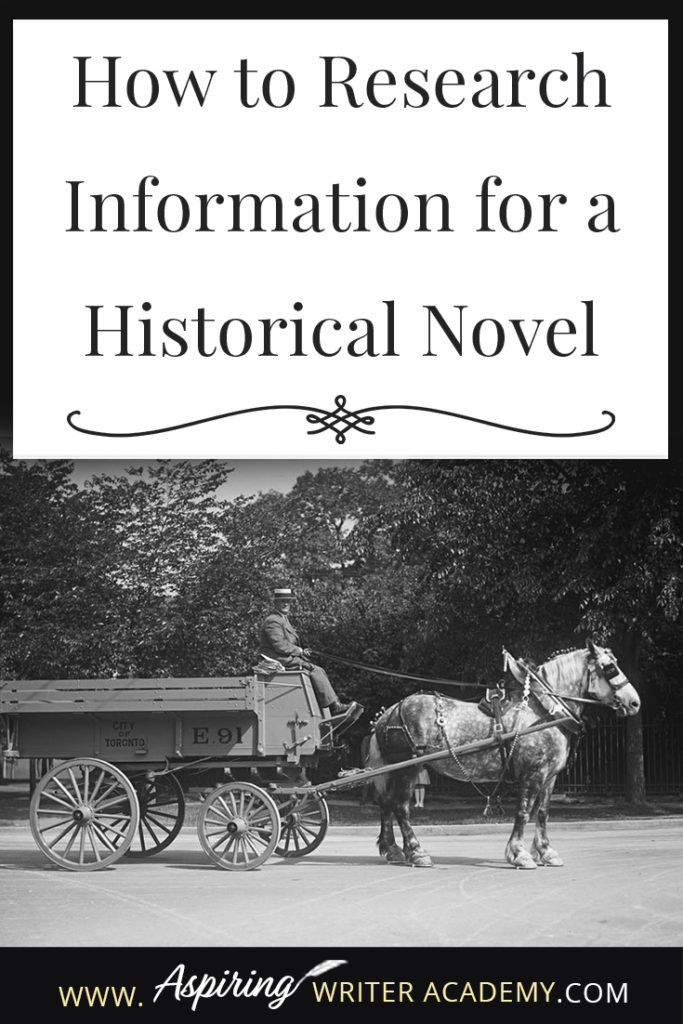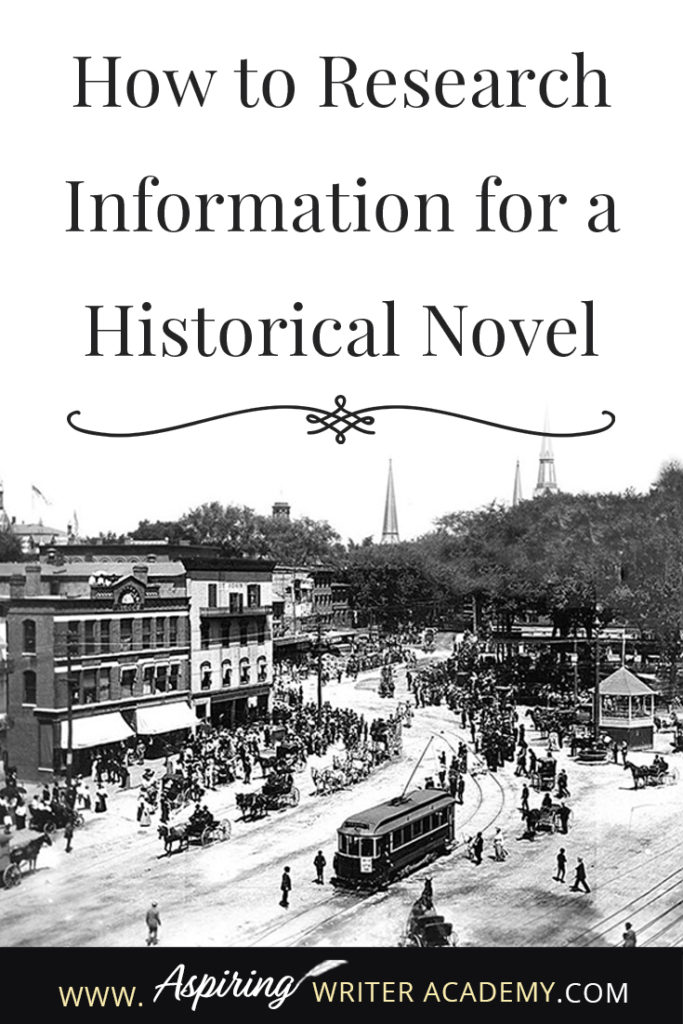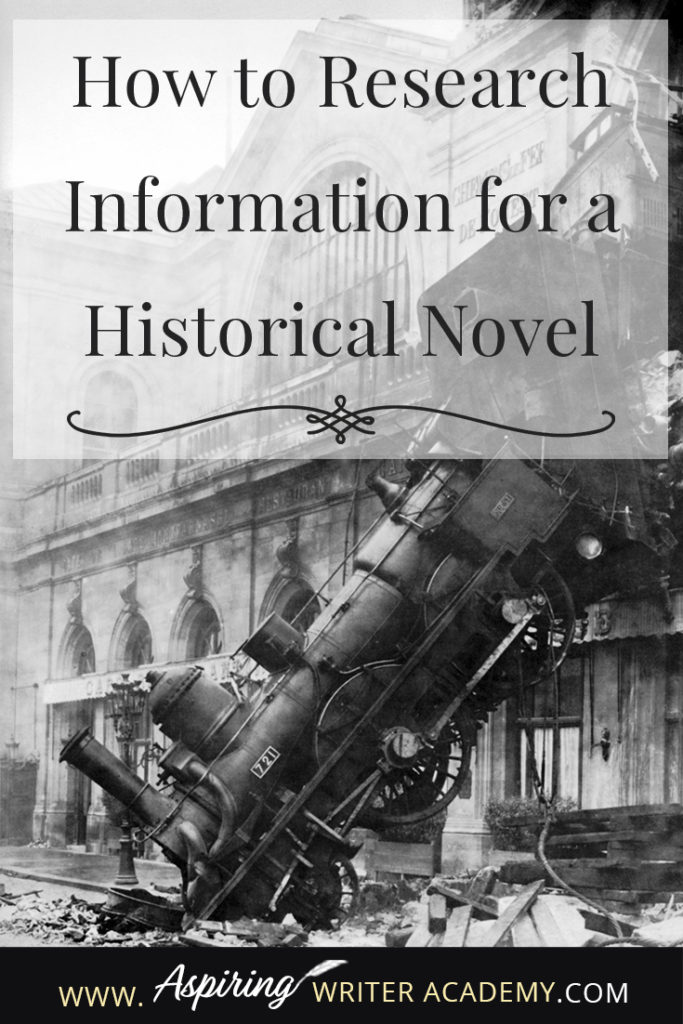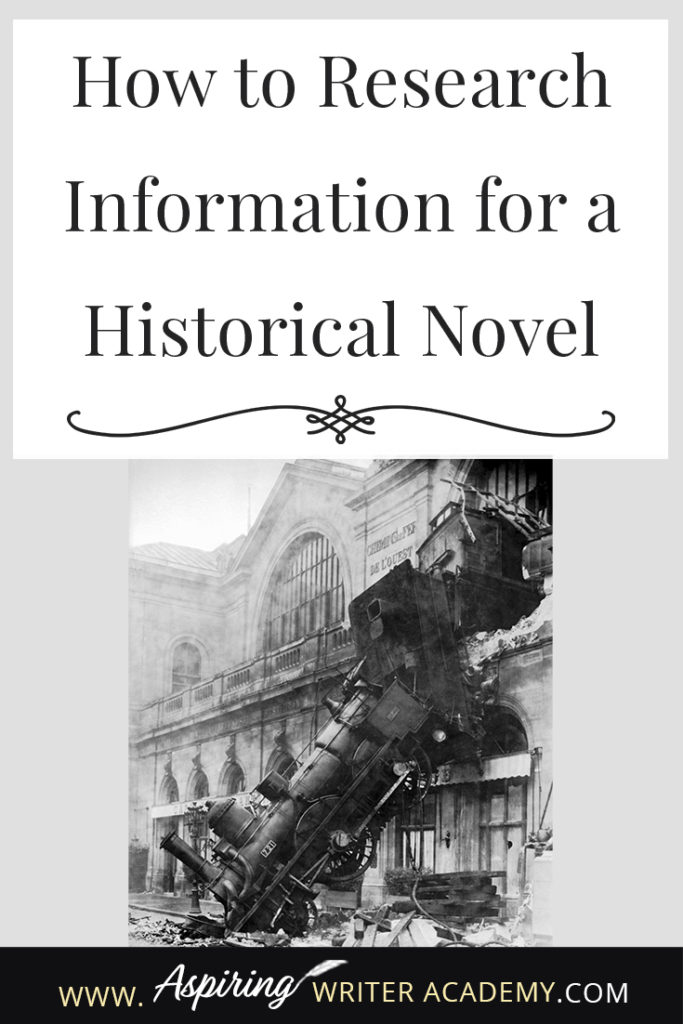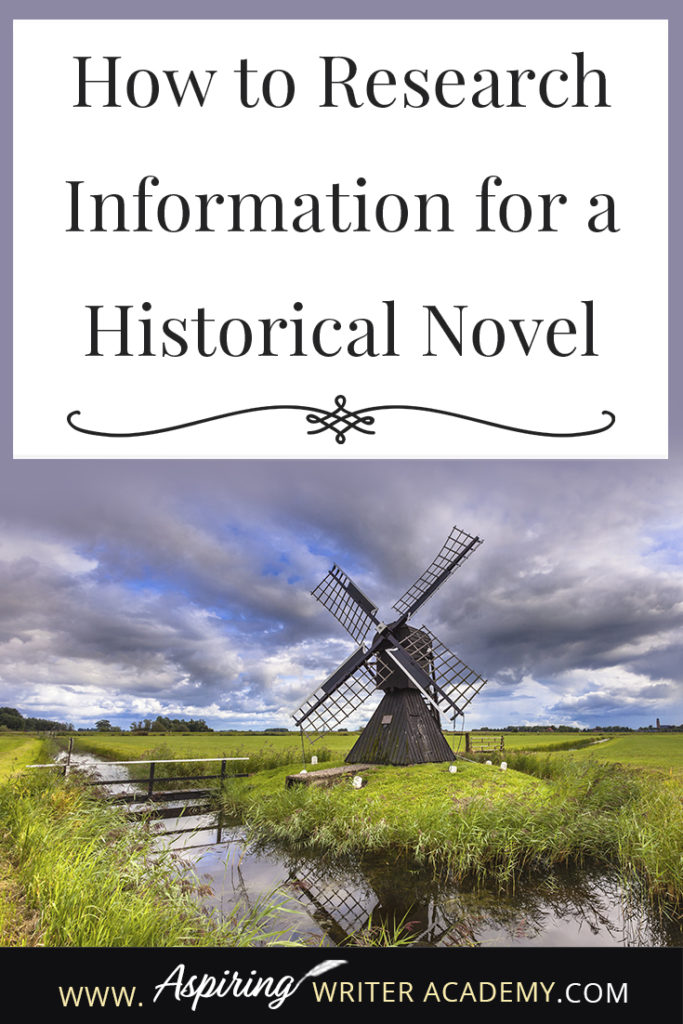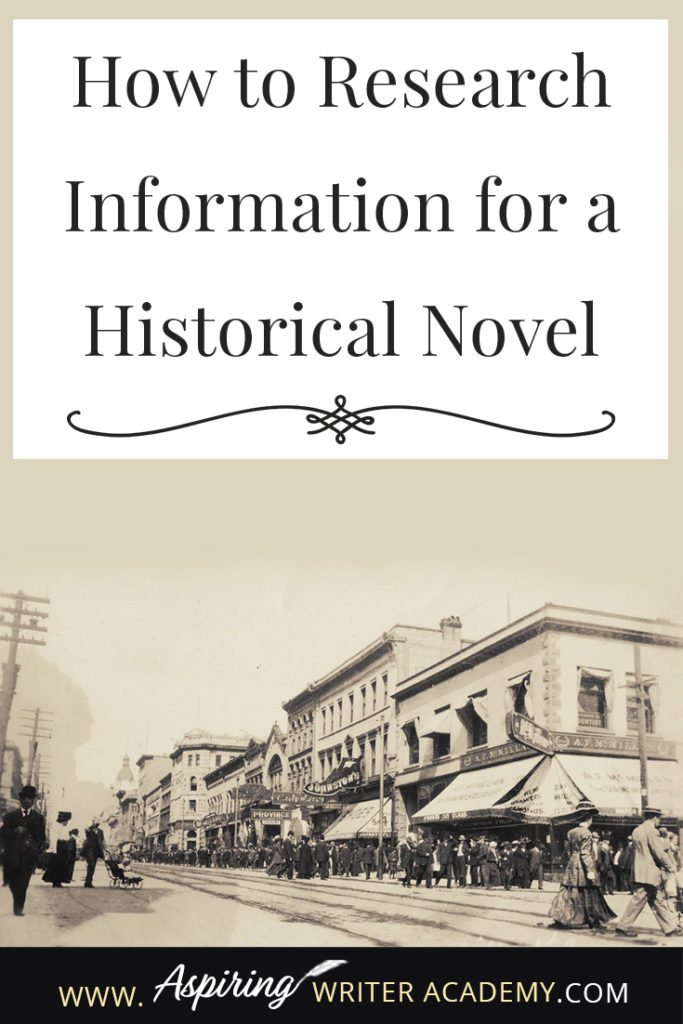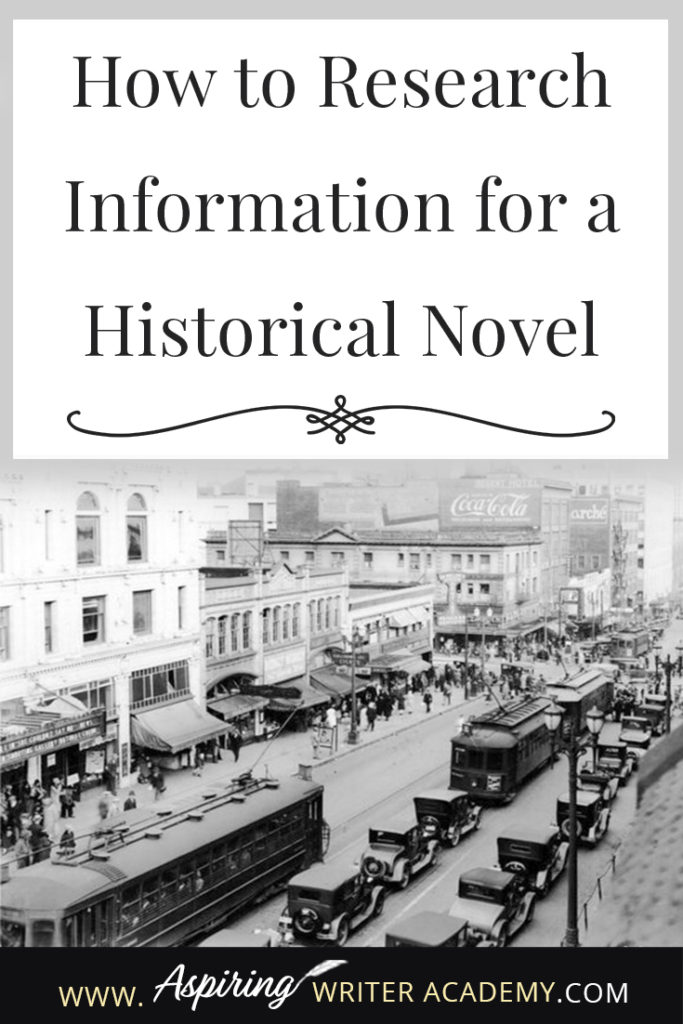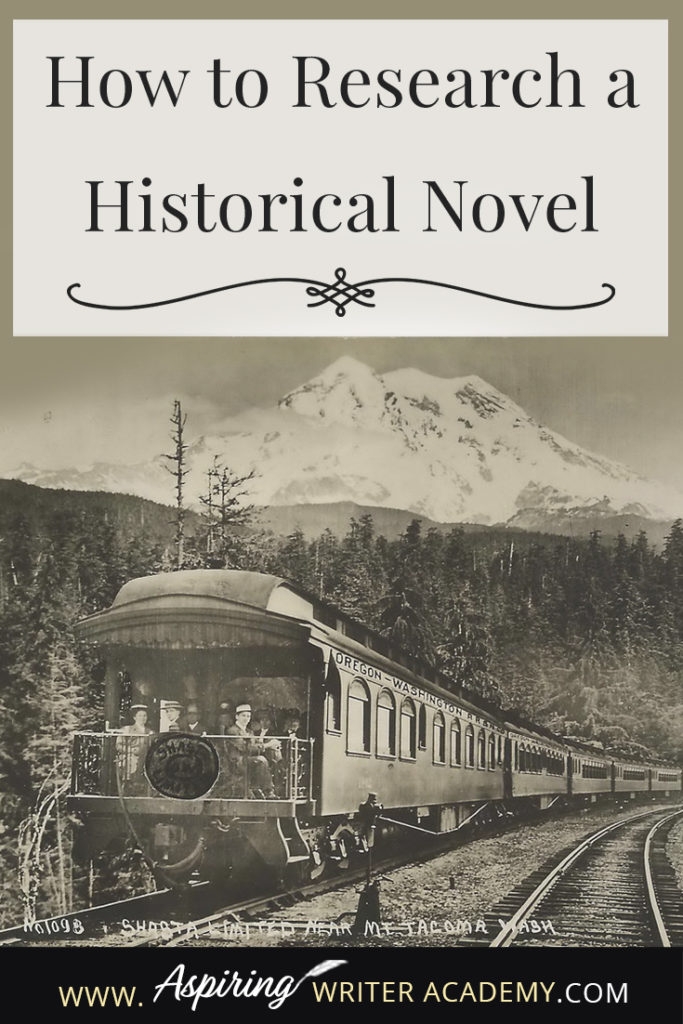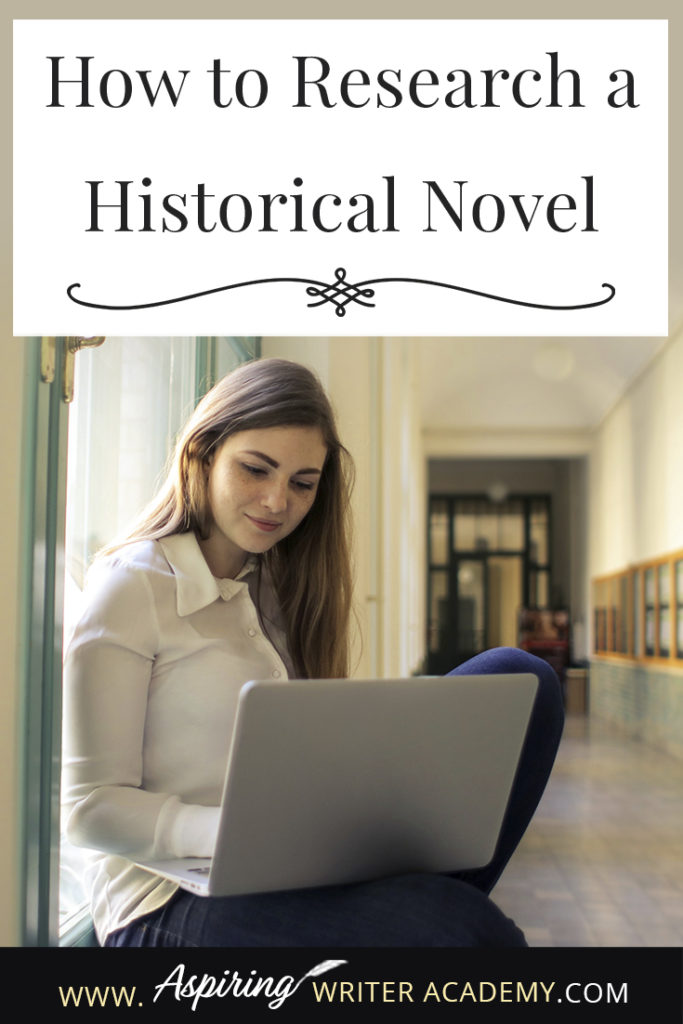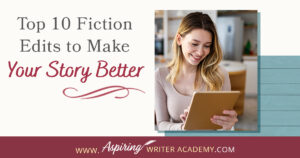How to Research Information for a Historical Novel
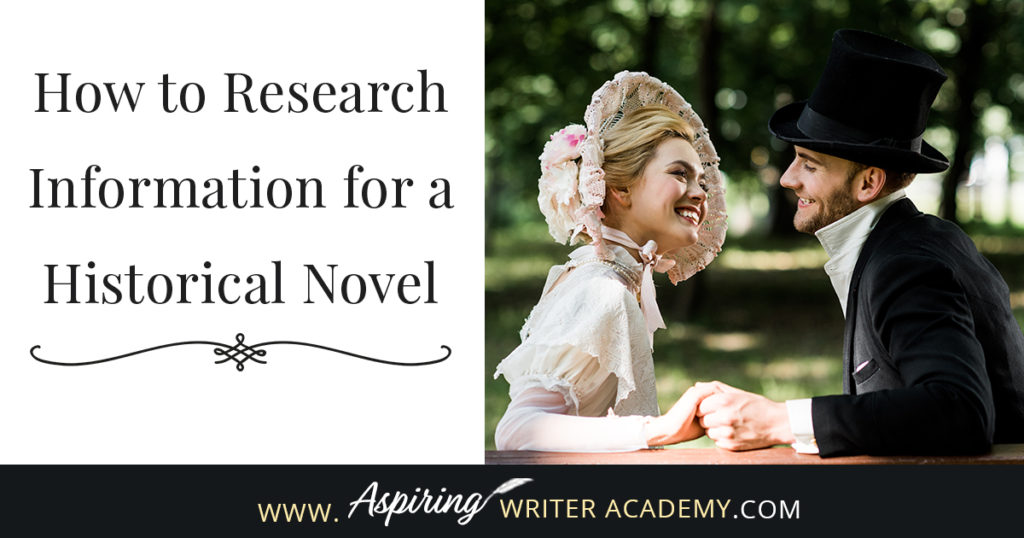
If you are interested in writing historical fiction, you may be wondering—how do you research a historical era? Where do you go to learn about the customs, currency, weapons, mode of transportation, style of dress? What kind of names, food dishes, or jobs were popular back then? Are there websites with this information?
In our post, How to Research Information for a Historical Novel, we give you several valuable resources to find the information you need to write a realistic, historical tale!
Follow along as we discuss:
- Tips for choosing time periods and settings
- Authenticity and genre considerations
- Where to find historical information
- Additional websites and research links
- How to organize and keep track of your findings
1) Tips for choosing time periods and settings:
First brainstorm: which historical era excites you and why?
If you are interested in writing a story based on a real historical event, choose a setting and a month / year within the timeline of that event.
Example:
A story centered on the U.S. Civil War might feature characters who live on the eastern portion of North America either in a northern or southern state, or both. The Civil War took place April 12, 1861 through April 9, 1865. You might consider having the story start any time between theses dates or perhaps even before or after the event depending on what topic you wish to focus.
What do you wish to say about this event?
What theme do you want to play out for the reader?
What do you want your characters to learn from this experience?
No matter if you choose to write a story during the California Gold Rush, the Gilded Age, WWI, or WWII, or any other era, you will want to research that time in history, choose where your story will take place and the date.
If you are not writing a story based on a historical event, you might also want to consider other factors when choosing a setting and date. If your story needs to include a telephone or sewing machine, research when that item was first used. This may direct the year you choose to start your story.
Example:
I recently started drafting a new story that takes place just after the year 1900. I chose a setting that I liked and had hoped to start the story around 1905. However, for my plot to work, I need my heroine to take a train to a remote town on the west coast. After research, I realized there were no trains to that region until 1912. Now I need to either change the year of my story or choose a different location for the setting.
That is why it is a good idea to outline the basic plot of your story before you write.
Outline your story to see what you might need to research. Make a list.
If you have a deadline, you cannot spend months on end researching before you start to write. Even those without an official book contract deadline should set their own deadline. Researching every aspect of an entire era or event is an exhaustive waste of time because you shouldn’t include everything you learn in your manuscript.
Instead, an author should specifically choose to include only certain aspects of that historical time. Taking the characters and plot into consideration, what do you want to highlight for the reader?
Do you want to show how handmade soap was made in ancient times?
Or how they cooked over an open fire?
How a milliner made hats for the women of Europe?
Do you want to focus on the styles of dress or the attitudes of the time? Perhaps how the proper or improper etiquette of that time could lead to the rise or fall of a lady in society? If so, then you might focus on the proper way to host a tea party or ball.
Do you need to research the weapons of that time and how they worked so the main character might discover an important clue to unlock a mystery? Or to defeat the villain?
After you have a basic story outline, research may inspire scene ideas, help you brainstorm theme, or more plot events, or lead you include a specific type of character.
However, just research enough to get started and then get writing!
You can add more items to your research list as you go. If needed, take one day here or there to answer questions that arise, or wait to do more research during the revision process once your manuscript is completed. It’s possible a scene could be cut during revision and the research you thought you needed for that scene is irrelevant.
2) Authenticity and genre considerations
If you write fiction, can’t you just make stuff up?
Readers know the story is derived from the author’s imagination but want it to be believable. They want a story they can relate to, a story they can understand. While an author may be able to tweak the year or sequence of events slightly, if it serves to enhance the plot, it is best to make a historical as authentic as you can.
If the town you are writing about doesn’t really exist, then base it off other towns during that time that were real. Or if you want your fictional town to be different than all the rest, contrast how and why it is different than others during that time.
And if there is something in your story that cannot be researched or for which there is no clear answer, then make sure it appears real for the reader. Believability is key.
On the other hand, readers want the story to move forward without being bogged down with a lot of research or historical details that do not matter. Do not bore the reader with your vast knowledge.
Historical fiction should not be a documentary, or history lesson, or contain blocks of ‘telling’ historical description. All historical details should be filtered into the story a little at a time in bite-sized pieces as needed to understand the characters, setting, and the plot.
Also be considerate of the expectations of the genre in which you are writing.
Example: You do not want to detail the raw realities of starving children or the crude hygiene of the time in a fluffy, flirty romance.
Don’t include everything but only choose a few of the historical aspects of this time to focus on. Things that will be directly related or connected to your plot and theme. Or maybe something that ties significantly with your character.
Consider the length of your story.
While a longer novel may have room for more in-depth historical detail, a category-length story or novella, should only have a few historical details sprinkled in, just enough to flavor the background to make the story feel authentic to the reader.
If writing a short story or piece of flash fiction, the details you select to be included should be there for a reason. Each detail should be specific and consequential. There simply is no room for anything more.
3) Where to find historical information
Whenever possible, visit the historical location you are writing about and see the lay of the land for yourself. Go to the visitor centers and museums and ask the locals about the region’s history and folklore. Take a tour. Collect a few historical books or pamphlets.
However, if you cannot conduct research in person, you can go online and use sites such as Google Earth and Google Street View which have cameras to let you see what a location looks like from multiple directions.
Of course, the region may have looked quite different in historical times, so you may also want to consult old maps, either in physical form or from online.
Godey’s Lady’s Book was a monthly magazine from 1830-1879 that offered fashion illustrations, advice, literary pieces, articles on current events and popular culture. Samples from these magazines can be found online.
Vintage Sears catalogs (which can be found on Ebay), show pictures, descriptions, and prices of historical items, household goods, and clothing.
Youtube.com (online) has videos on almost everything including costuming and how to load a musket. A lot of valuable information can be found there.
Where to Find Research for a Historical Novel:
- Library archives
- Journals, diaries, or letters
- Historical non-fiction, biographies, memoirs
- Old books or newspapers
- Court records or census
- Historic maps or pamphlets
- Photographs (Google Images or Pinterest)
- Old catalogs (Ex. Sears & Roebuck)
- Magazines (Ex. Godey’s Lady’s Book)
- Museums, galleries, and visitor centers
- Historic villages and reenactments
- In person or online “tours” with a tour guide
- Interview experts and locals
- Youtube.com videos
- Period movies or film documentaries
4) Additional websites and research links
(Note: Always check reliability of online sources. Beware of copy and paste articles or those which may contain false information.)
HathiTrust digital library – www.hathitrust.org
Imperial War Museums – www.iwm.org.uk
Edwardian Promenade - www.edwardianpromenade.com
Britannica Encyclopedia - www.britannica.com
www.etymonline.com (origin and meaning of words, phrases, and things)
www.phrases.org.uk (The phrase finder)
www.americanheritage.com
https://earth.google.com (Google Earth Maps)
www.pinterest.com (articles, photos)
www.Youtube.com has videos on almost everything including costuming and how to load a musket. A lot of valuable information can be found there.
Books, Magazines – periodicals and magazines can be found online at www.hathitrust.org and other digital libraries:
National Geographic Magazine
Life Magazine
Saturday Evening Post Magazine
Godey’s Lady’s Book (magazine 1930-1879) - offering fashion illustrations, advice, literary pieces, articles on current events and popular culture.
Vintage Sears catalogs – purchase on eBay, showing pictures, descriptions, and prices of historical items and clothing.
5) How to organize and keep track of your findings
There is nothing more frustrating than doing research only to lose the website where you found key information or to have all your research so disorganized that you can’t find what you are looking for.
Right from the start you need to create an online file or word document, Scrivener file, or physical binder with tabbed dividers where you can list and store your research.
- Keep a file of all sources: title, date, author, website, page number, so that you can find that same website or article again if needed.
- When you interview experts and locals and make sure you keep a record of all their contact information. Email, phone number, physical address, etc.
- You may want to create a paper or online historical timeline scroll with a line up the center. On the left, list the timeline (dates) of actual events (with lines sticking out the side like a thermometer). On the right, line up your character’s fictional backstory and present story events to see how history may impact your plot. What real historic events should your character know about? What happened as they were growing up? How did it affect them?
- Create a posterboard collage or online Pinterest board of photos or maps of the setting. Or make a collage which shows everything pertaining to your character or that your character owns. Perhaps a collection of photos detailing clothing/dress, hats, or hairstyles which you can refer to as you are writing.
I hope you have enjoyed reading, How to Research Information for a Historical Novel, and have discovered some valuable resources to help you create believable historical stories with rich, authentic details that your readers will love!
If you would like help outlining your story, you may want to download our Free Brainstorming Your Story Idea Worksheet.
Do you find it difficult to create compelling antagonists and villains for your stories? Do your villains feel cartoonish and unbelievable? Do they lack motivation or a specific game plan? Discover the secrets to crafting villains that will stick with your readers long after they finish your story, with our How to Create Antagonists & Villains Workbook.
This 32-page instructional workbook is packed with valuable fill-in-the-blank templates and practical advice to help you create memorable and effective antagonists and villains. Whether you're a seasoned writer or just starting out, this workbook will take your writing to the next level.
If you have any questions or would like to leave a comment below, we would love to hear from you!
Our Goal for Aspiring Writer Academy is to help people learn how to write quality fiction, teach them to publish and promote their work, and to give them the necessary tools to pursue a writing career.

ENTER YOUR EMAIL BELOW
TO GET YOUR FREE
"Brainstorming Your Story Idea Worksheet"
7 easy fill-in-the-blank pages,
+ 2 bonus pages filled with additional story examples.
A valuable tool to develop story plots again and again.
Other Blog Posts You May Like
7 Steps to Begin Writing a New Fictional Story
Fiction Writing: How to Get a Literary Agent
How Writing Prompts Can Improve Your Fictional Story
Creative Writing: 5 Ways to Strengthen a Weak Fictional Character
Fiction Writing: Create a Storyboard to Map Out Your Scenes
Fiction Writing: How Specific Details Can Bring Your Setting to Life
How to Spot Publishing Scams & How To Avoid Them
5 Common Mistakes New Writers Make
Fiction Writing: Story Analysis of the movie “Passengers”
Fiction Writing: How to Write Compelling Dialogue
Fiction Writing: 5 Key Differences Between a Novel and a Novella
Pros & Cons of Traditional vs. Self-Publishing Fiction
3 Ways to Avoid Writing ‘Episodic’ Scenes in Fiction
Scene & Sequel: The Secret to Plotting an Epic Novel
Scene & Sequel: The Secret to Plotting an Epic Novel (Part 2)

is a multi-published author, speaker, and writing coach. She writes sweet contemporary, inspirational, and historical romance and loves teaching aspiring writers how to write quality fiction. Read her inspiring story of how she published her first book and launched a successful writing career.

